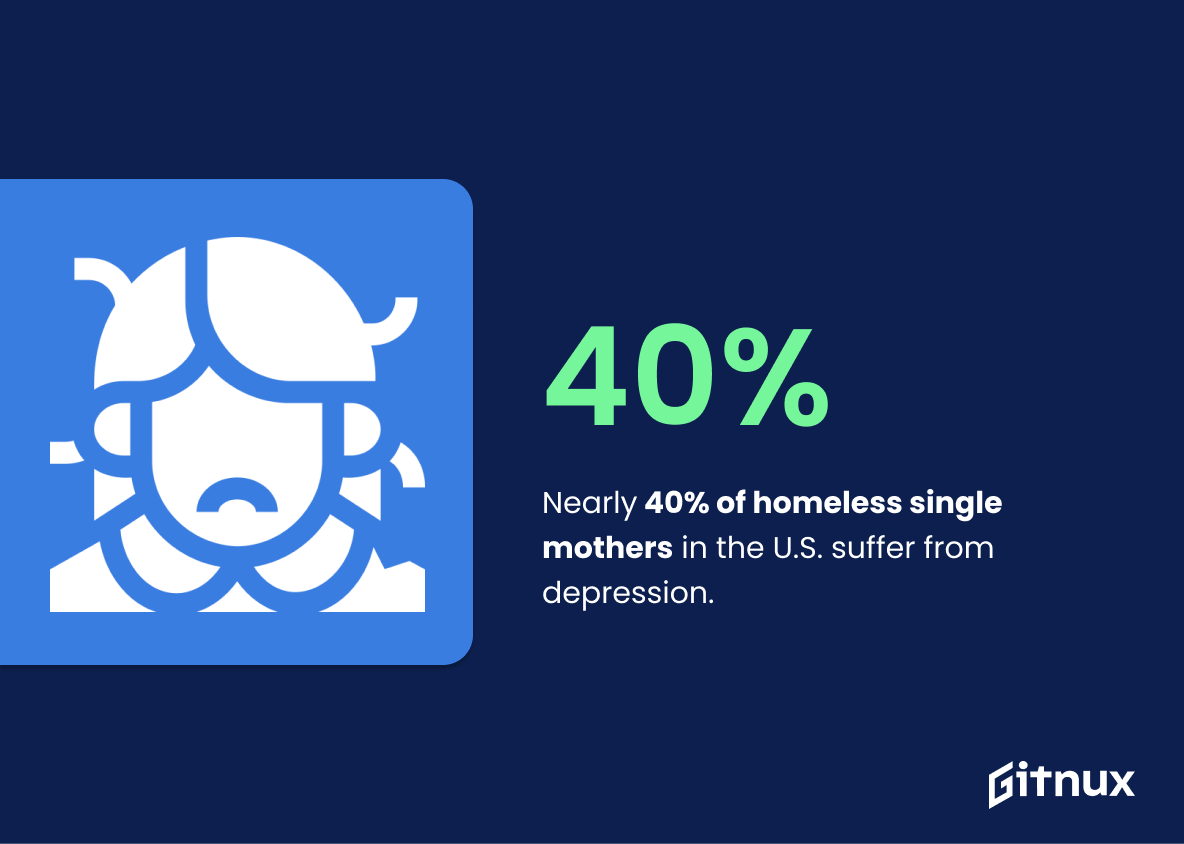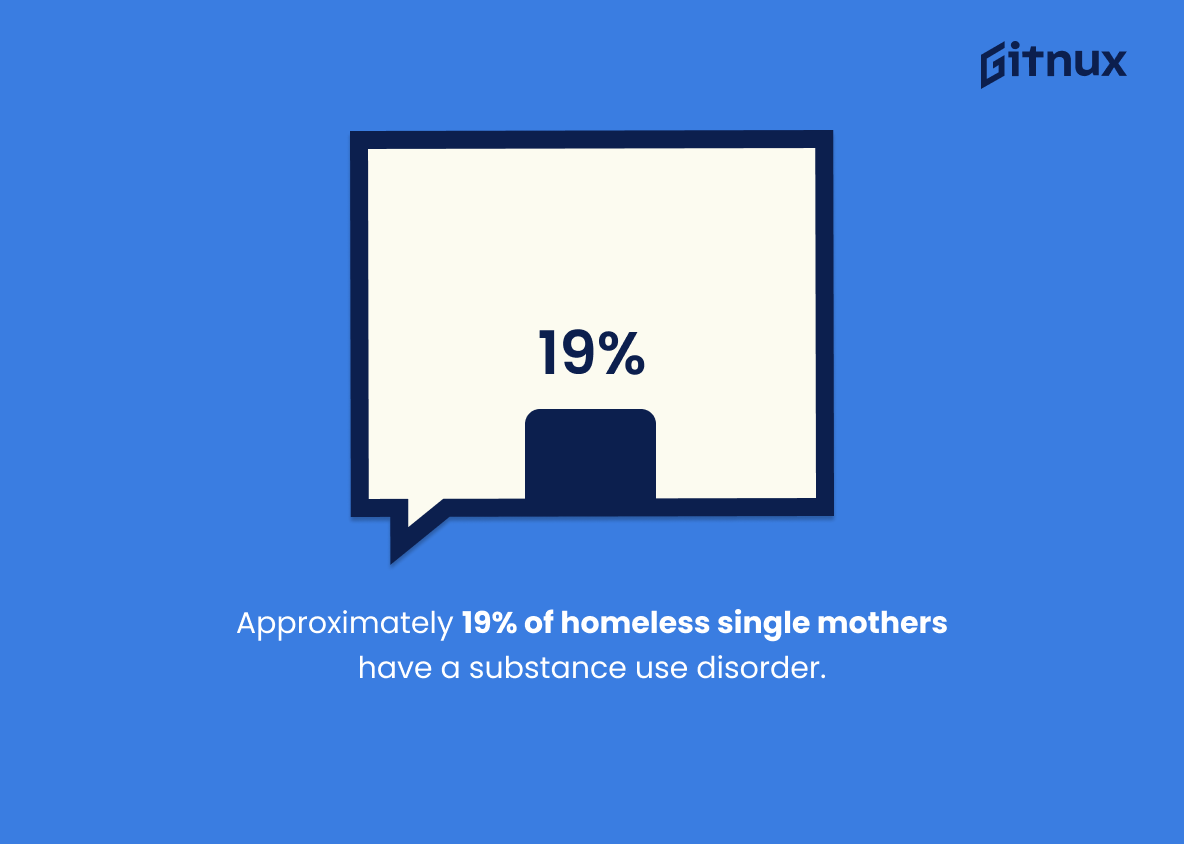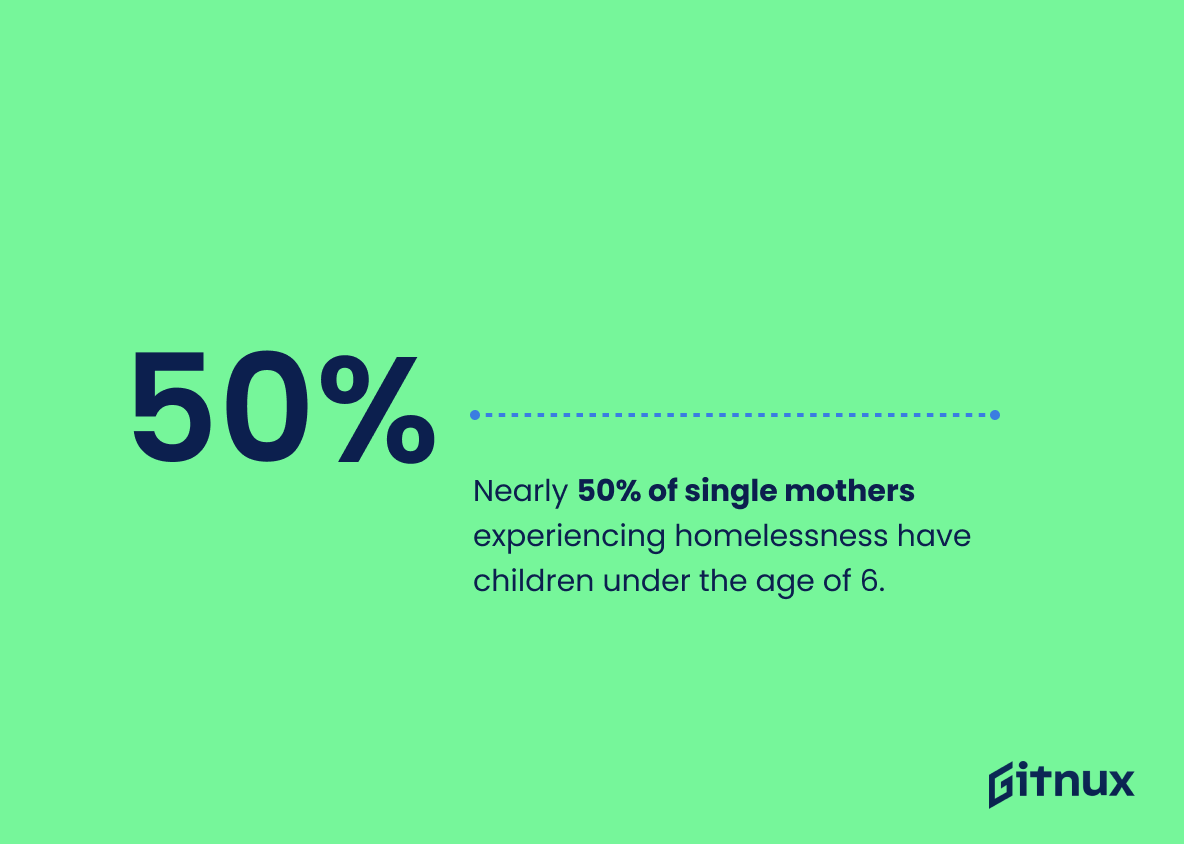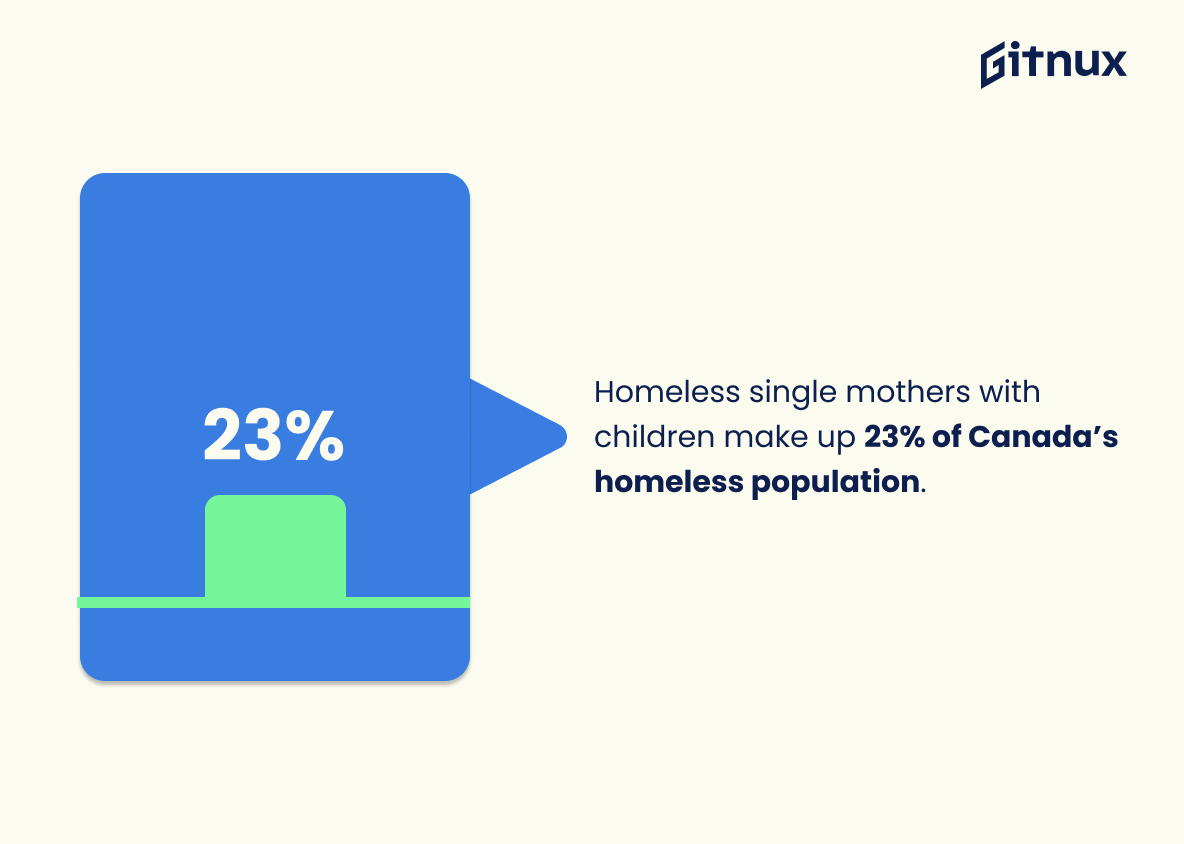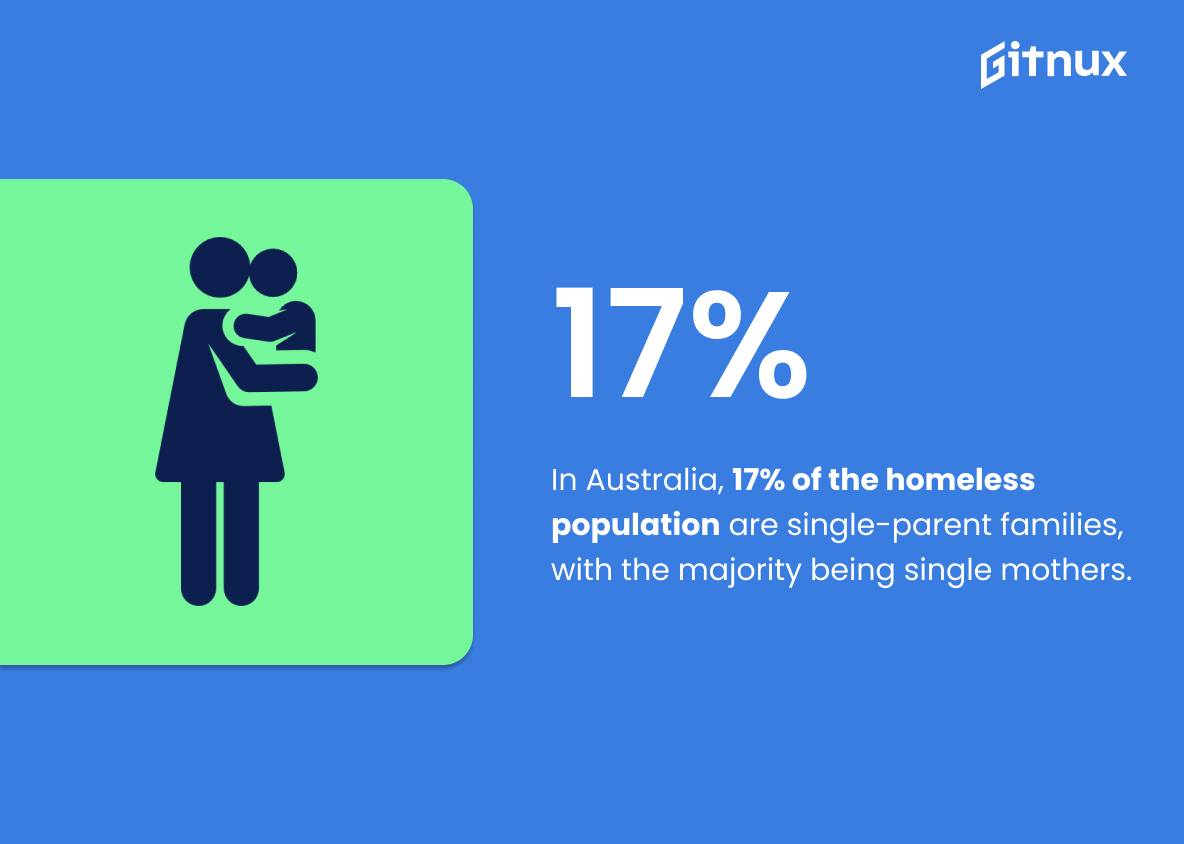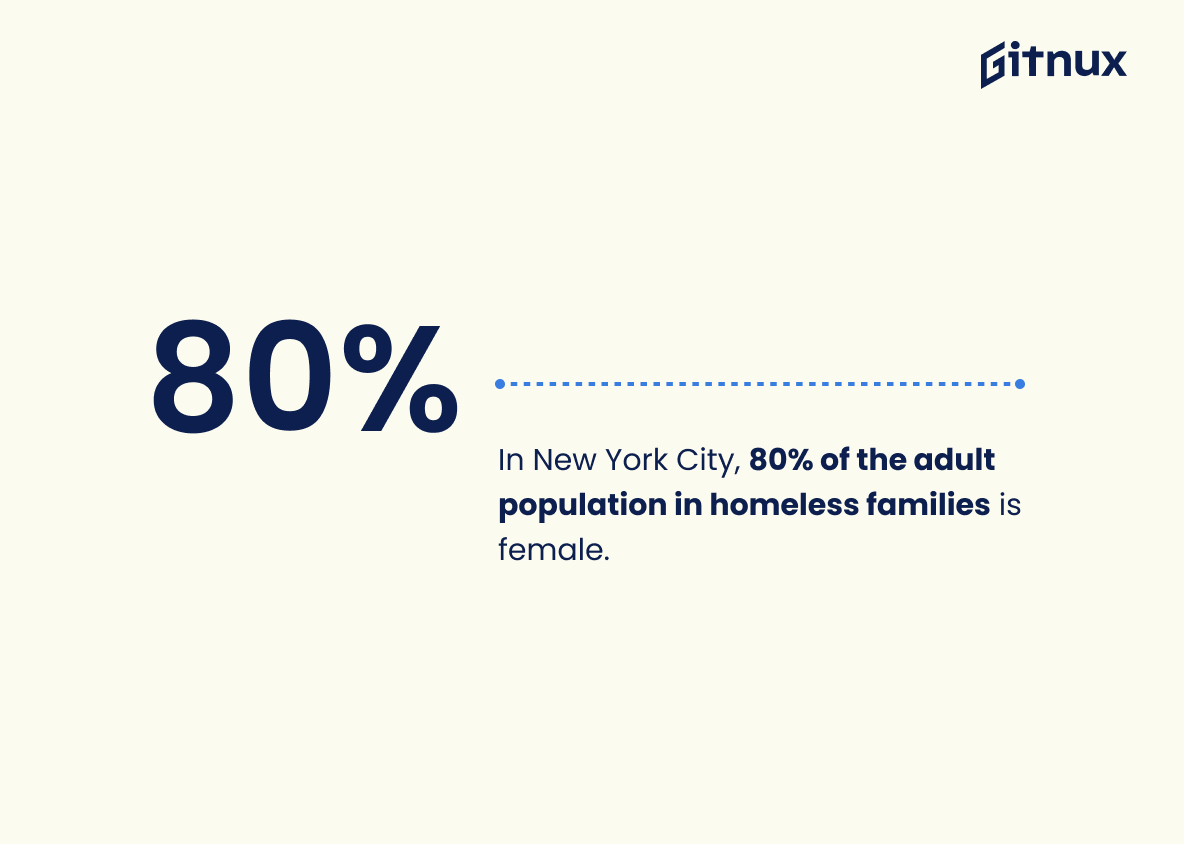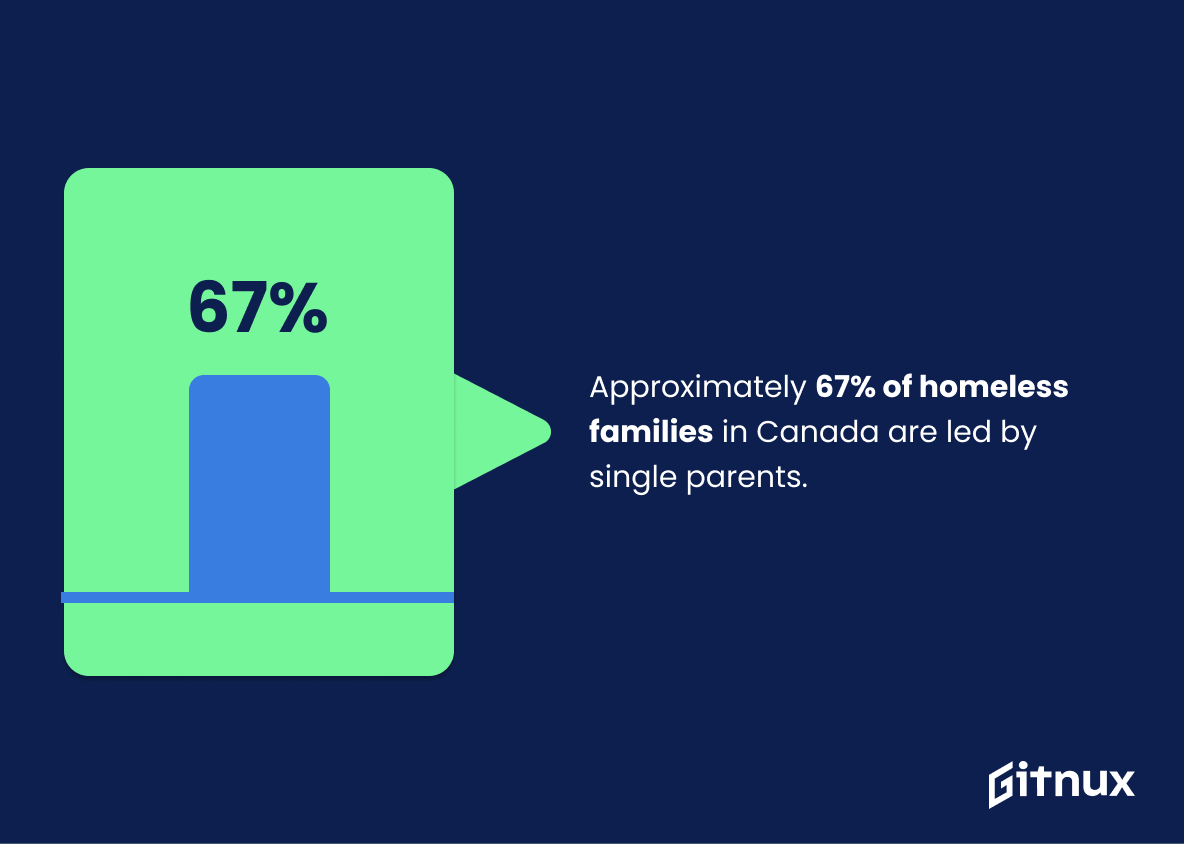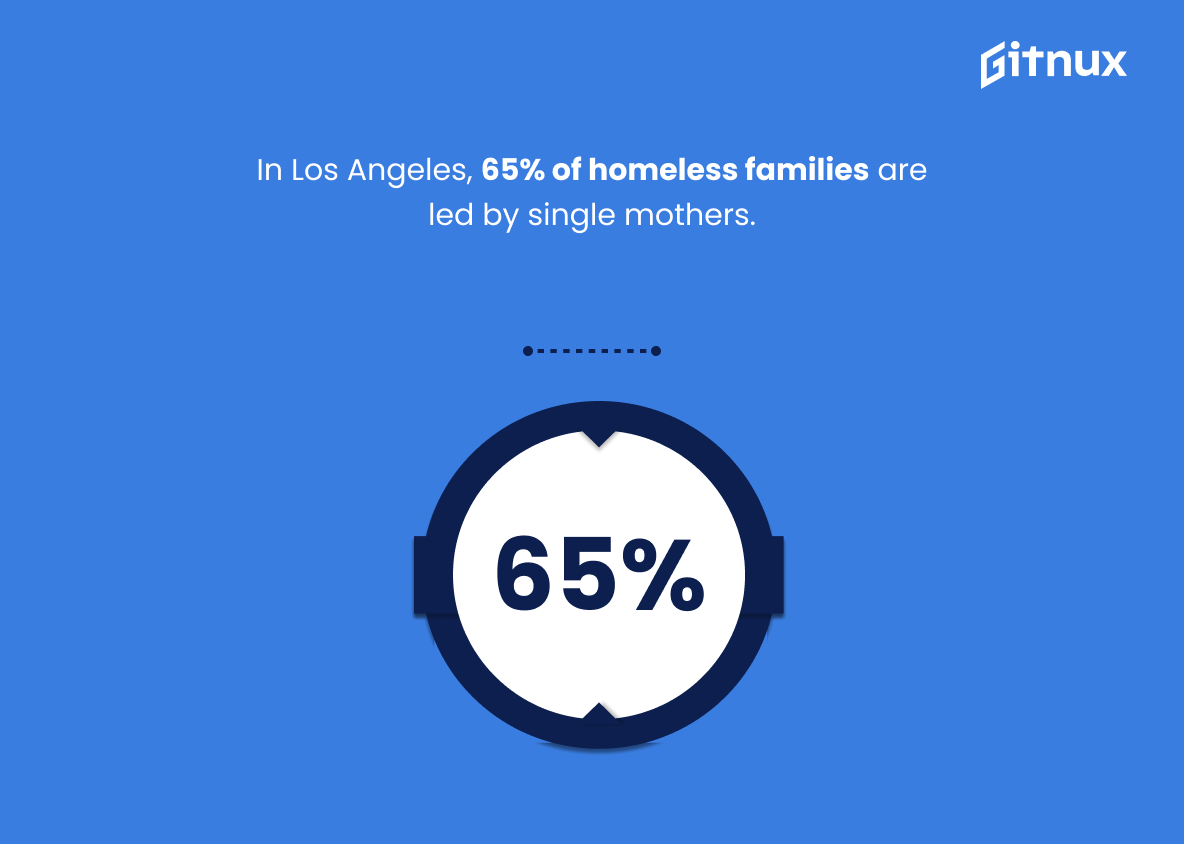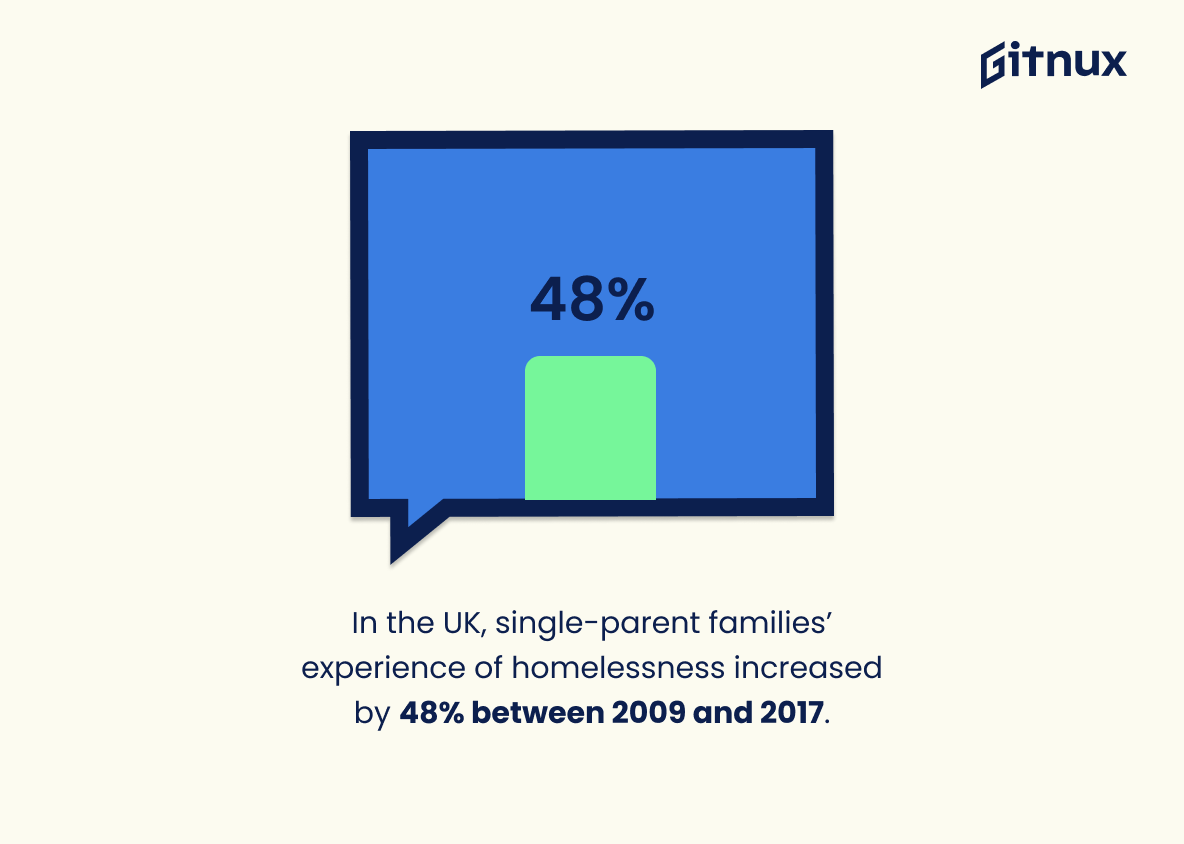Homelessness is a growing problem in the United States and around the world. Single mothers are particularly vulnerable to homelessness due to their lack of resources, support systems, and financial stability. This blog post will explore statistics related to homeless single mothers from various countries including the U.S., Canada, England, Australia, and more. We’ll look at how many homeless women with children there are in each country as well as other factors such as domestic violence rates among this population group and mental health issues they face while living on the streets or in shelters. Additionally we’ll discuss what causes these families to become homeless so that we can better understand why this issue continues to be an ongoing challenge for society today.
This statistic is a stark reminder of the dangers homeless single mothers face on a daily basis. It highlights the vulnerability of this group of people and the need for greater protection and support. It also serves as a call to action for those in a position to help, to ensure that homeless single mothers are provided with the resources and safety they need to survive and thrive.
Three out of four homeless women with children have experienced domestic violence.
This statistic is a stark reminder of the prevalence of domestic violence in the lives of homeless single mothers. It highlights the need for more resources to be allocated to helping these women and their children escape the cycle of violence and poverty. It also serves as a call to action for society to take a stand against domestic violence and provide support to those affected.
Homeless Single Mothers Statistics Overview
Nearly 40% of homeless single mothers in the U.S. suffer from depression.
This statistic is a stark reminder of the mental health struggles faced by homeless single mothers in the U.S. It highlights the need for more mental health resources and support for this vulnerable population. It also serves as a call to action for those who are in a position to help, to do their part in providing assistance to homeless single mothers.
Approximately 19% of homeless single mothers have a substance use disorder.
This statistic is a stark reminder of the struggles that homeless single mothers face. It highlights the prevalence of substance use disorder among this population, and the need for more resources to help them overcome this issue. It also serves as a call to action for those who are in a position to help, to provide support and assistance to homeless single mothers in need.
Nearly 50% of single mothers experiencing homelessness have children under the age of 6.
This statistic is a stark reminder of the harsh reality that many single mothers face when it comes to homelessness. It highlights the fact that not only are single mothers struggling to make ends meet, but they are also having to provide for their young children in the midst of their difficult situation. This statistic serves as a call to action to help these mothers and their children in any way possible.
Homeless single mothers with children make up 23% of Canada’s homeless population.
This statistic is a stark reminder of the reality that homeless single mothers with children are disproportionately represented in Canada’s homeless population. It highlights the need for greater support and resources for this vulnerable group, and serves as a call to action for those who are in a position to help.
In England, 59% of homeless families placed in temporary accommodation are single-parent families, with the majority being led by single mothers.
This statistic is a powerful reminder of the disproportionate burden that single mothers face when it comes to homelessness. It highlights the need for greater support for single mothers who are struggling to make ends meet and are at risk of becoming homeless. It also serves as a stark reminder of the gender inequality that exists in society, with single mothers being more likely to experience homelessness than single fathers. This statistic is a call to action to ensure that single mothers are provided with the resources and support they need to keep a roof over their heads.
In Australia, 17% of the homeless population are single-parent families, with the majority being single mothers.
This statistic is a powerful reminder of the reality of homelessness in Australia, particularly for single-parent families. It highlights the disproportionate burden that single mothers face in terms of homelessness, and the need for greater support and resources to help them. It also serves as a call to action for those in positions of power to take steps to address this issue and ensure that single mothers have access to the resources they need to get back on their feet.
A survey in California found that 2,800 (23%) unaccompanied women were single mothers experiencing homelessness.
This statistic is a powerful reminder of the reality that many single mothers in California are facing: homelessness. It highlights the fact that these women are not only struggling to provide for themselves, but also for their children. This statistic serves as a stark reminder of the need for more resources and support for single mothers who are experiencing homelessness.
In New York City, 80% of the adult population in homeless families is female.
This statistic is a stark reminder of the disproportionate burden that homeless single mothers face in New York City. It highlights the need for more resources and support for these women, who are often struggling to provide for their families in the face of extreme poverty and limited access to housing. It also serves as a call to action for those who are in a position to help, to ensure that these women and their families have the support they need to get back on their feet.
Approximately 67% of homeless families in Canada are led by single parents.
This statistic is a powerful reminder of the disproportionate burden single mothers face when it comes to homelessness. It highlights the need for greater support for single mothers who are struggling to make ends meet and are at risk of becoming homeless. It also serves as a call to action for policy makers to create more effective solutions to address the issue of homelessness among single mothers.
In Los Angeles, 65% of homeless families are led by single mothers.
This statistic is a powerful reminder of the disproportionate burden single mothers face when it comes to homelessness. It highlights the need for greater support and resources for single mothers who are struggling to make ends meet and keep a roof over their heads. It also serves as a call to action for policy makers and community leaders to take steps to address the root causes of homelessness and provide assistance to those in need.
31% of homeless single-parent families identify the main cause of their homelessness in London as the end of a private tenancy.
This statistic is a powerful reminder of the reality of homelessness in London, particularly for single-parent families. It highlights the fact that the end of a private tenancy is a major factor in the homelessness of these families, and that this is an issue that needs to be addressed. It also serves to illustrate the vulnerability of single-parent families in the face of rising rents and the lack of affordable housing in the city.
In the UK, single-parent families’ experience of homelessness increased by 48% between 2009 and 2017.
This statistic is a stark reminder of the growing problem of homelessness among single-parent families in the UK. It highlights the need for more support and resources to be made available to these families, as well as a greater awareness of the issue. The 48% increase in homelessness among single-parent families over the past eight years is a worrying trend that cannot be ignored.
27.3% of homeless single mothers experiencing homelessness in the U.S. are working.
This statistic is a powerful reminder of the struggles that homeless single mothers face in the U.S. It highlights the fact that even when these women are doing their best to make ends meet, they are still unable to find stable housing. It also speaks to the lack of resources available to these women, as they are often unable to find employment that pays enough to cover their basic needs. This statistic is a stark reminder of the need for more support and resources for homeless single mothers in the U.S.
Conclusion
The statistics presented in this blog post demonstrate the alarming prevalence of homelessness among single mothers across the United States, Canada, England and Australia. Approximately 60% of homeless women aged 30-50 are mothers, with more than 90% being single parents. In 2020 alone, 10,683 homeless women with minor children were reported in the U.S., while 81% of all homeless families with children were headed by a single mother according to a 2011 study. Homelessness is often accompanied by violence; three out of four homeless women have experienced domestic abuse and they face 13 times higher risk compared to those living in stable housing conditions. Furthermore, nearly 40%, 19%, 50%, 23%, 59% and 65 % respectively suffer from depression or substance use disorder as well as having young children under 6 years old when experiencing homelessness in America , Canada , England , Australia , Los Angeles and New York City . The data also shows that 17 percent unaccompanied female adults who experience homelessness are actually single mothers while 31 percent identify end private tenancy as their main cause for becoming homeless which has increased 48 percent between 2009 – 2017 within UK . Lastly 27 point 3 per cent working age adult population amongst them still manage to work despite facing such difficult circumstances
It is clear that there needs to be greater support available for these vulnerable individuals so that they can access safe accommodation options along with other essential services like mental health care or job training programs if needed . This will help reduce poverty levels associated with long term effects on both physical & psychological wellbeing due lack basic necessities required leading healthy life style
References
0. – https://www.www.samhsa.gov
1. – https://www.strongestfamilies.com
2. – https://www.hhs.texas.gov
3. – https://www.nnedv.org
4. – https://www.www.ncbi.nlm.nih.gov
5. – https://www.www.nationalhomeless.org
6. – https://www.www.gingerbread.org.uk
7. – https://www.www.app.com
8. – https://www.www.abs.gov.au
9. – https://www.invisiblepeople.tv
10. – https://www.www.coalitionforthehomeless.org
11. – https://www.england.shelter.org.uk
12. – https://www.www.trustforlondon.org.uk
13. – https://www.www.homelesshub.ca
